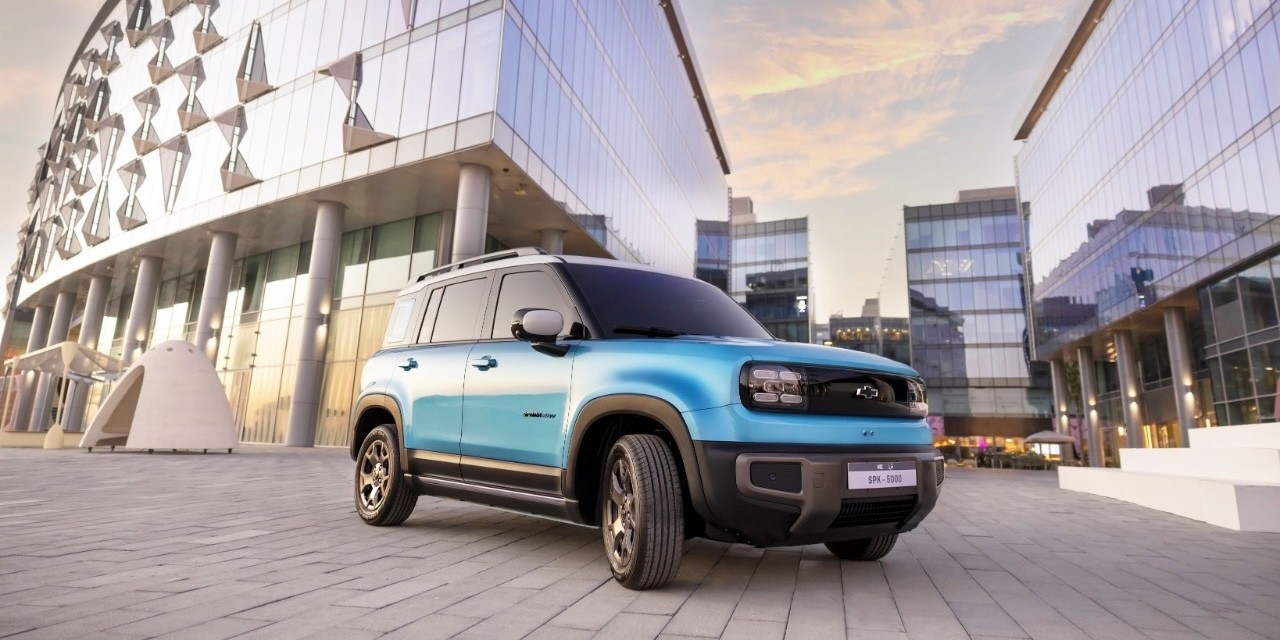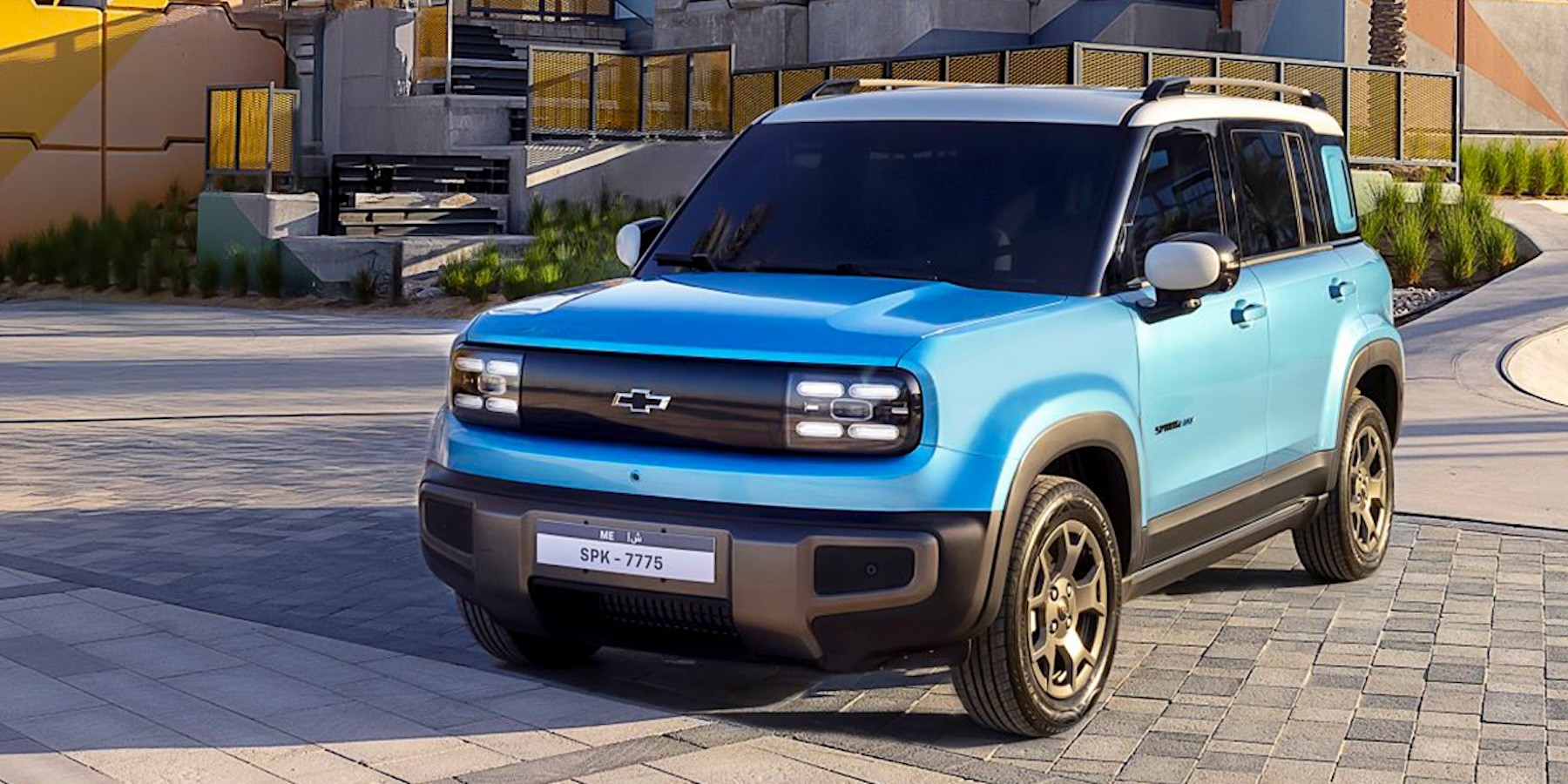Is The Chevy Spark An Electric Car? This is a question many prospective car buyers are asking, and CARS.EDU.VN is here to provide a comprehensive answer. We’ll delve into the details of the Chevy Spark, its electric vehicle options, and what makes it a compelling choice for those seeking fuel efficiency and eco-friendliness. Discover if the Chevy Spark is the right EV for you and explore related car alternatives.
1. Understanding the Chevy Spark
The Chevy Spark is a subcompact hatchback known for its affordability, fuel efficiency, and easy maneuverability. While the traditional Chevy Spark is a gasoline-powered vehicle, there’s growing interest in electric versions or similar electric alternatives. This section clarifies the current status of the Chevy Spark and explores potential future electric models.
1.1 The Gasoline-Powered Chevy Spark
The Chevy Spark, as it’s traditionally known, is powered by a gasoline engine. Here are some key specifications:
- Engine: 1.4L four-cylinder engine
- Horsepower: 98 hp
- Fuel Economy: Up to 30 mpg city/38 mpg highway
This makes it an economical option for city driving and commuting. The Spark’s compact size makes it easy to park and navigate in urban environments.
1.2 Is There an Electric Chevy Spark Available Now?
Currently, there is no fully electric Chevy Spark model available in the United States. The Chevy Spark has been discontinued, with the last model year being 2022. However, General Motors (GM) has introduced electric vehicles like the Chevy Bolt and Bolt EUV, which serve as electric alternatives.
1.3 Future Possibilities: The Chevy Spark EUV
While the current Chevy Spark is not electric, GM has plans for an electric variant known as the Chevy Spark EUV (Electric Utility Vehicle) for specific markets outside the U.S. This model is based on a joint venture in China and is aimed at regions like South America, Africa, and the Middle East.
Key Features of the Chevy Spark EUV (International Model):
| Feature | Specification |
|---|---|
| Motor | 75 kW (101 hp) |
| Battery | 42 kWh LFP |
| Range (NEDC cycle) | Up to 360 km (220 miles) |
| Infotainment Screen | 10.1-inch |
| Instrument Cluster | 8.8-inch digital |



This international version showcases GM’s commitment to electric vehicles and the potential for future electric models in different markets.
1.4 CARS.EDU.VN Insights on Chevy Spark Alternatives
At CARS.EDU.VN, we understand the importance of staying informed about electric vehicle options. While the Chevy Spark isn’t currently available as an EV in the U.S., we offer in-depth reviews and comparisons of other electric vehicles that might suit your needs. Our goal is to help you make an informed decision based on your preferences and requirements.
2. Exploring Electric Vehicle Alternatives to the Chevy Spark
Since the Chevy Spark isn’t available as an EV in the U.S., let’s explore some electric vehicle alternatives that offer similar benefits, such as affordability, efficiency, and compact size.
2.1 Chevy Bolt and Bolt EUV
The Chevy Bolt and Bolt EUV are excellent electric alternatives to the Chevy Spark. They offer longer ranges, more interior space, and advanced technology features.
-
Chevy Bolt:
- Range: Up to 259 miles
- Horsepower: 200 hp
- Features: Spacious interior, user-friendly infotainment system
-
Chevy Bolt EUV:
- Range: Up to 247 miles
- Horsepower: 200 hp
- Features: SUV-like design, available Super Cruise driver-assistance technology
Both models provide a compelling electric driving experience with impressive range and features.
2.2 Nissan LEAF
The Nissan LEAF is another popular electric vehicle that offers a balance of affordability and range.
- Range: Up to 226 miles
- Horsepower: 147 hp (standard), 214 hp (LEAF Plus)
- Features: Comfortable ride, spacious cargo area
The LEAF has been a long-standing option in the EV market and provides a reliable and efficient driving experience.
2.3 Mini Cooper Electric
For those seeking a more stylish and fun-to-drive electric car, the Mini Cooper Electric is an excellent choice.
- Range: Up to 114 miles
- Horsepower: 181 hp
- Features: Iconic design, sporty handling
The Mini Cooper Electric combines the classic Mini Cooper styling with the benefits of electric power.
2.4 Hyundai Kona Electric
The Hyundai Kona Electric offers a longer range and a more versatile SUV-like design.
- Range: Up to 258 miles
- Horsepower: 201 hp
- Features: Stylish design, advanced safety features
The Kona Electric is a popular choice for those looking for a practical and efficient electric SUV.
2.5 Fiat 500e
The Fiat 500e is a compact and stylish electric car that is perfect for city driving.
- Range: Up to 149 miles
- Horsepower: 117 hp
- Features: Retro design, nimble handling
The Fiat 500e offers a unique blend of Italian style and electric efficiency.
2.6 Smart EQ Fortwo
The Smart EQ Fortwo is an ultra-compact electric car designed for urban environments.
- Range: Up to 58 miles
- Horsepower: 80 hp
- Features: Extremely compact, easy to park
The Smart EQ Fortwo is ideal for navigating crowded city streets and tight parking spaces.
2.7 CARS.EDU.VN’s Comparative Analysis of Electric Vehicles
At CARS.EDU.VN, we offer detailed comparative analyses of these electric vehicles, helping you understand the pros and cons of each model. Our comparisons include:
- Range and Charging Times
- Performance and Handling
- Interior and Technology Features
- Pricing and Incentives
We aim to provide you with the information you need to make an informed decision about the best electric vehicle for your needs.
3. The Benefits of Choosing an Electric Car
Opting for an electric car comes with numerous advantages, contributing to both environmental sustainability and cost savings.
3.1 Environmental Benefits
Electric cars produce zero tailpipe emissions, reducing air pollution and greenhouse gas emissions. This helps improve air quality in urban areas and mitigates the effects of climate change. According to the Environmental Protection Agency (EPA), electric vehicles can significantly reduce carbon emissions compared to gasoline-powered cars.
3.2 Cost Savings
While the initial cost of an electric car might be higher, the long-term cost savings can be substantial. Electric cars have lower fuel costs, as electricity is typically cheaper than gasoline. Additionally, electric cars require less maintenance, with fewer moving parts and no need for oil changes or spark plug replacements.
3.3 Government Incentives
Many governments offer incentives for purchasing electric vehicles, such as tax credits, rebates, and grants. These incentives can help offset the initial cost of an electric car and make them more affordable. For example, the U.S. federal government offers a tax credit of up to $7,500 for eligible electric vehicles.
3.4 Performance and Driving Experience
Electric cars offer instant torque, resulting in quick acceleration and a smooth driving experience. They also operate quietly, reducing noise pollution in urban areas. Many electric car owners appreciate the responsive and enjoyable driving dynamics of their vehicles.
3.5 Reduced Maintenance
Electric cars have fewer moving parts than gasoline-powered cars, reducing the need for maintenance and repairs. There are no oil changes, spark plug replacements, or exhaust system repairs. This can save you time and money over the lifespan of the vehicle.
3.6 CARS.EDU.VN’s Guide to Electric Car Ownership
CARS.EDU.VN provides a comprehensive guide to electric car ownership, covering topics such as:
- Charging Options and Infrastructure
- Battery Life and Replacement
- Maintenance Tips and Schedules
- Maximizing Range and Efficiency
Our goal is to help you transition smoothly to electric car ownership and enjoy all the benefits it offers.
4. Factors to Consider When Choosing an Electric Car
Choosing an electric car involves several factors to ensure it meets your needs and preferences.
4.1 Range and Charging Needs
Consider your daily driving needs and choose an electric car with sufficient range to cover your typical commute and errands. Also, evaluate your charging options. Can you charge at home, or will you rely on public charging stations?
4.2 Battery Life and Warranty
Check the battery life and warranty of the electric car. Most manufacturers offer warranties of at least eight years or 100,000 miles on the battery pack. Understand the terms of the warranty and what it covers.
4.3 Performance and Handling
Test drive the electric car to assess its performance and handling. Consider factors such as acceleration, braking, and overall driving dynamics. Choose a model that provides a comfortable and enjoyable driving experience.
4.4 Features and Technology
Evaluate the features and technology offered by the electric car. Consider factors such as infotainment system, safety features, and driver-assistance technologies. Choose a model that meets your needs and preferences.
4.5 Cost and Incentives
Consider the total cost of ownership, including the initial price, fuel costs, maintenance costs, and insurance costs. Also, research available government incentives, such as tax credits and rebates, to help offset the cost of the electric car.
4.6 CARS.EDU.VN’s Electric Car Comparison Tool
CARS.EDU.VN offers an electric car comparison tool that allows you to compare different models side-by-side. You can compare factors such as range, performance, features, and cost to find the best electric car for your needs.
5. Chevy Spark EUV: A Closer Look (International Model)
While the electric Chevy Spark EUV is currently intended for markets outside the United States, it’s worth exploring its features and specifications to understand GM’s vision for affordable electric vehicles.
5.1 Design and Styling
The Chevy Spark EUV features a compact SUV-like design with a bold and boxy exterior. It comes in various vibrant color options, including Sea Blue, Track Yellow, and Tiger Blue. The ACTIV trim boasts a sleek two-tone roof and sporty 16-inch wheels.
5.2 Performance and Range
The Chevy Spark EUV is powered by a 75 kW (101 hp) motor driving the front wheels. It uses a 42 kWh LFP battery, providing a range of up to 360 km (220 miles) on the NEDC driving cycle.
5.3 Interior and Technology
The interior of the Chevy Spark EUV features a 10.1-inch infotainment screen and an 8.8-inch digital instrument cluster. It supports Apple CarPlay and Android Auto, providing seamless smartphone integration.
5.4 Customization Options
The Chevy Spark EUV offers various customization options, including Ground Effects, Side Moldings, Assist Steps, and Side and Rear Storage Boxes. These accessories allow owners to personalize their vehicles and make them uniquely their own.
5.5 Availability and Pricing
The Chevy Spark EUV is currently available in the UAE, KSA, Bahrain, Kuwait, Qatar, Lebanon, Iraq, Oman, and Egypt. Pricing details have not been officially announced.
5.6 CARS.EDU.VN’s Insights on the Chevy Spark EUV
CARS.EDU.VN closely monitors the development and availability of electric vehicles around the world. While the Chevy Spark EUV is not currently available in the U.S., we provide updates and insights on its potential impact on the electric vehicle market.
6. How to Maintain Your Electric Car
Maintaining an electric car is different from maintaining a gasoline-powered car. Here are some essential tips to keep your electric car in top condition.
6.1 Battery Care
The battery is the most critical component of an electric car. Follow these tips to maximize battery life:
- Avoid extreme temperatures: Park your electric car in a garage or shaded area to protect the battery from extreme heat or cold.
- Charge regularly: Charge your electric car regularly, but avoid fully charging it to 100% unless necessary for a long trip.
- Avoid deep discharges: Avoid letting the battery drain to zero. Charge it when it reaches around 20-30%.
6.2 Tire Maintenance
Proper tire maintenance is essential for safety and efficiency. Follow these tips:
- Check tire pressure regularly: Maintain the recommended tire pressure to optimize fuel efficiency and handling.
- Rotate tires: Rotate your tires every 6,000 to 8,000 miles to ensure even wear.
- Inspect tires for wear and damage: Regularly inspect your tires for signs of wear and damage, and replace them when necessary.
6.3 Brake Maintenance
Electric cars use regenerative braking, which reduces wear on the brake pads. However, it’s still essential to maintain the braking system:
- Inspect brake pads and rotors: Have your brake pads and rotors inspected regularly for wear and damage.
- Replace brake fluid: Replace the brake fluid every two to three years to ensure proper braking performance.
6.4 Cabin Air Filter
Replace the cabin air filter regularly to ensure clean air inside the car. A clogged cabin air filter can reduce airflow and impact the performance of the climate control system.
6.5 Software Updates
Keep the software of your electric car up to date. Manufacturers often release software updates to improve performance, add new features, and fix bugs.
6.6 CARS.EDU.VN’s Maintenance Checklist for Electric Cars
CARS.EDU.VN provides a detailed maintenance checklist for electric cars, covering all the essential tasks to keep your vehicle in top condition. Our checklist includes:
- Battery Health Monitoring
- Tire Rotation and Alignment
- Brake System Inspection
- Cabin Air Filter Replacement
- Software Updates
7. The Future of Electric Vehicles
The electric vehicle market is rapidly evolving, with new models, technologies, and infrastructure developments emerging every year.
7.1 Advancements in Battery Technology
Battery technology is constantly improving, with new developments in energy density, charging speed, and battery life. Solid-state batteries, for example, promise to offer higher energy density and improved safety compared to current lithium-ion batteries.
7.2 Expansion of Charging Infrastructure
The charging infrastructure for electric vehicles is expanding rapidly, with more public charging stations being installed every year. Companies like Tesla, Electrify America, and ChargePoint are investing heavily in building out the charging network.
7.3 Government Regulations and Incentives
Governments around the world are implementing regulations and incentives to promote the adoption of electric vehicles. These include stricter emissions standards for gasoline-powered cars, tax credits for electric vehicle purchases, and investments in charging infrastructure.
7.4 Autonomous Driving Technology
Autonomous driving technology is also advancing rapidly, with many electric vehicles offering advanced driver-assistance systems (ADAS) such as adaptive cruise control, lane-keeping assist, and automatic emergency braking.
7.5 CARS.EDU.VN’s Coverage of the Electric Vehicle Market
CARS.EDU.VN provides comprehensive coverage of the electric vehicle market, including:
- Reviews of New Electric Vehicle Models
- Analysis of Battery Technology Trends
- Updates on Charging Infrastructure Developments
- Coverage of Government Regulations and Incentives
Our goal is to keep you informed about the latest developments in the electric vehicle market and help you make informed decisions about your next car purchase.
8. Common Misconceptions About Electric Cars
There are several common misconceptions about electric cars that can deter potential buyers. Let’s debunk some of these myths.
8.1 Myth: Electric Cars Have Limited Range
Reality: While early electric cars had limited range, modern electric cars offer ranges that are comparable to gasoline-powered cars. Many models can travel over 200 miles on a single charge, and some can even exceed 300 miles.
8.2 Myth: Electric Cars Take Too Long to Charge
Reality: Charging times for electric cars have decreased significantly in recent years. With Level 2 chargers, you can fully charge an electric car overnight. DC fast chargers can provide a significant charge in as little as 30 minutes.
8.3 Myth: Electric Cars Are Expensive to Maintain
Reality: Electric cars typically have lower maintenance costs than gasoline-powered cars. They have fewer moving parts, require no oil changes, and have regenerative braking systems that reduce wear on brake pads.
8.4 Myth: Electric Cars Are Not Suitable for Cold Weather
Reality: While cold weather can reduce the range of electric cars, modern electric cars are designed to perform well in cold climates. They have features such as battery pre-conditioning and heated seats to improve comfort and efficiency.
8.5 Myth: Electric Cars Are Not Environmentally Friendly
Reality: Electric cars produce zero tailpipe emissions, reducing air pollution and greenhouse gas emissions. While the production of electric car batteries does have an environmental impact, the overall environmental footprint of electric cars is lower than gasoline-powered cars.
8.6 CARS.EDU.VN’s Fact-Checking on Electric Vehicle Myths
CARS.EDU.VN provides fact-checking on common misconceptions about electric vehicles, helping you separate fact from fiction. Our articles are based on credible sources and expert analysis, providing you with accurate information to make informed decisions.
9. Finding Reliable Electric Car Services
Finding reliable services for your electric car is essential for maintenance and repairs.
9.1 Certified Electric Car Technicians
Look for certified electric car technicians who have the training and expertise to work on electric vehicles. These technicians have specialized knowledge of electric car systems and can diagnose and repair issues effectively.
9.2 Electric Car Service Centers
Choose service centers that specialize in electric cars. These centers have the necessary equipment and tools to perform maintenance and repairs on electric vehicles.
9.3 Online Reviews and Ratings
Check online reviews and ratings of electric car service centers to find reputable providers. Look for service centers with positive reviews and high ratings from other electric car owners.
9.4 Warranty Coverage
Understand the warranty coverage for your electric car and choose service centers that are authorized to perform warranty repairs. This will ensure that your repairs are covered by the manufacturer’s warranty.
9.5 CARS.EDU.VN’s Directory of Electric Car Services
CARS.EDU.VN provides a directory of electric car services, including certified technicians, service centers, and charging stations. Our directory helps you find reliable services for your electric car in your area.
10. Frequently Asked Questions (FAQs) About Electric Cars
Here are some frequently asked questions about electric cars to help you better understand this technology:
10.1 What is the range of an electric car?
The range of an electric car varies depending on the model and battery size. Modern electric cars typically offer ranges between 200 and 300 miles on a single charge.
10.2 How long does it take to charge an electric car?
Charging times vary depending on the charging level and battery size. Level 1 charging (120V) can take several hours, while Level 2 charging (240V) can fully charge an electric car overnight. DC fast charging can provide a significant charge in as little as 30 minutes.
10.3 What are the benefits of owning an electric car?
The benefits of owning an electric car include zero tailpipe emissions, lower fuel costs, reduced maintenance, and government incentives.
10.4 How much does it cost to charge an electric car?
The cost to charge an electric car varies depending on the electricity rate and charging level. On average, it costs less to charge an electric car than to fill up a gasoline-powered car.
10.5 Are electric cars safe?
Electric cars are generally considered safe. They undergo the same safety testing as gasoline-powered cars and often have additional safety features such as automatic emergency braking and lane-keeping assist.
10.6 What is regenerative braking?
Regenerative braking is a system that captures the energy from braking and uses it to recharge the battery. This helps improve the efficiency of electric cars and reduce wear on brake pads.
10.7 How long do electric car batteries last?
Electric car batteries typically last for 8 to 10 years or 100,000 to 200,000 miles. Most manufacturers offer warranties on the battery pack for at least eight years or 100,000 miles.
10.8 Can I charge an electric car at home?
Yes, you can charge an electric car at home using a Level 1 or Level 2 charger. Level 1 charging uses a standard 120V outlet, while Level 2 charging requires a 240V outlet.
10.9 What is the difference between a hybrid and an electric car?
A hybrid car combines a gasoline engine with an electric motor and battery. It can run on gasoline, electricity, or a combination of both. An electric car runs solely on electricity and has no gasoline engine.
10.10 Are electric cars expensive to insure?
The cost to insure an electric car can vary depending on the model, your driving record, and your location. However, some insurance companies offer discounts for electric cars due to their safety features and lower risk of accidents.
10.11 CARS.EDU.VN’s FAQ Section on Electric Cars
CARS.EDU.VN provides a comprehensive FAQ section on electric cars, answering all your questions and concerns about this technology. Our FAQ section is regularly updated with new information and insights.
Conclusion: Embracing the Electric Future with CARS.EDU.VN
While the traditional Chevy Spark is not an electric car, the automotive industry is rapidly moving towards electrification. Electric vehicles offer numerous benefits, including reduced emissions, lower running costs, and a fun driving experience. At CARS.EDU.VN, we’re committed to providing you with the latest information and resources to help you navigate the electric vehicle market.
Whether you’re considering an electric alternative to the Chevy Spark or exploring the broader world of EVs, CARS.EDU.VN is your trusted source for expert advice, detailed reviews, and comparative analysis. We aim to empower you with the knowledge you need to make informed decisions and embrace the electric future.
Ready to explore your electric vehicle options? Visit CARS.EDU.VN today to discover detailed reviews, comparisons, and resources to help you find the perfect EV for your needs.
Contact us:
- Address: 456 Auto Drive, Anytown, CA 90210, United States
- WhatsApp: +1 555-123-4567
- Website: CARS.EDU.VN
Let cars.edu.vn be your guide in the exciting world of electric vehicles.
